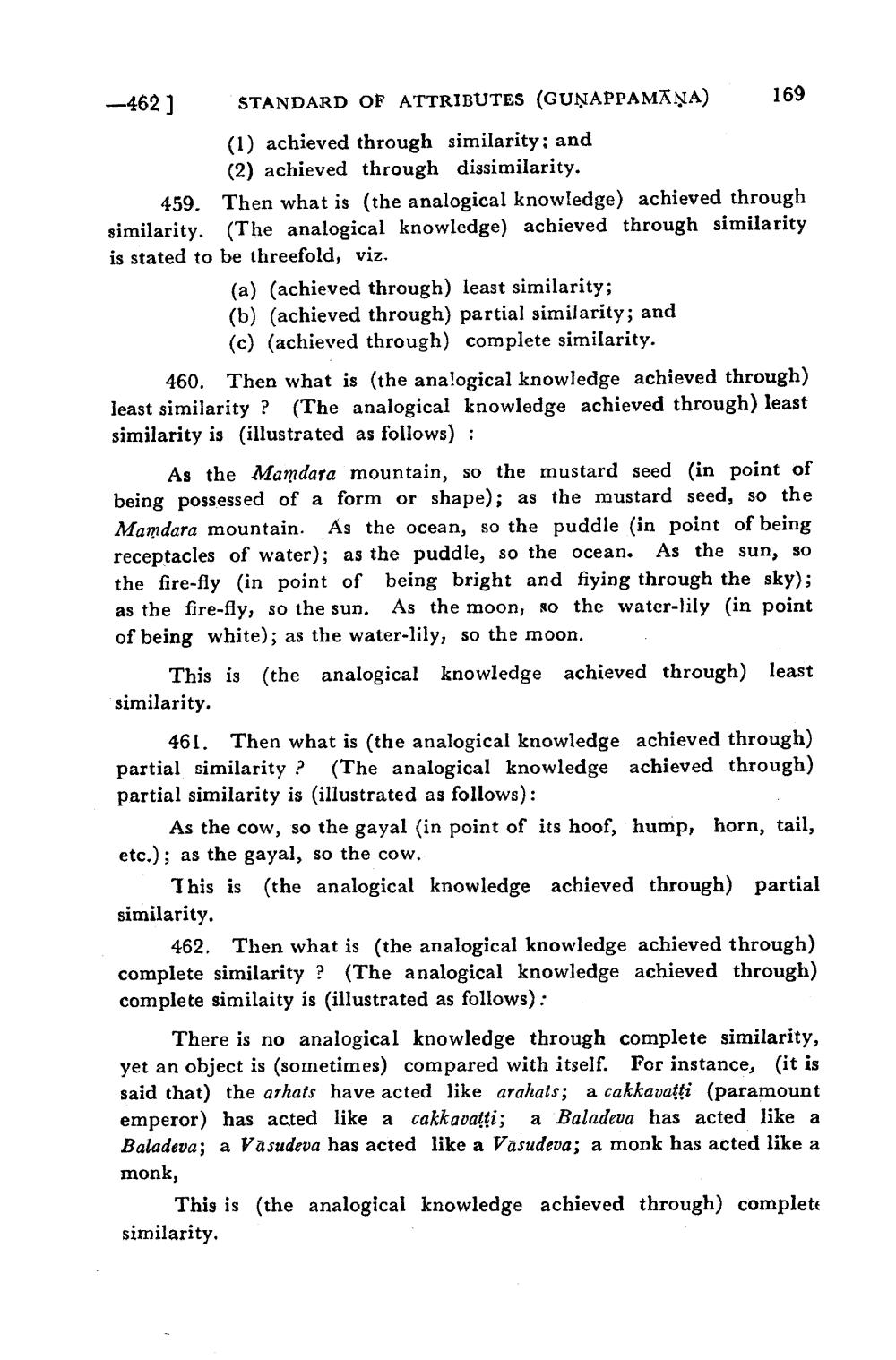________________
-462]
STANDARD OF ATTRIBUTES (GUNAPPAMAŅA)
(1) achieved through similarity; and (2) achieved through dissimilarity.
169
459. Then what is (the analogical knowledge) achieved through similarity. (The analogical knowledge) achieved through similarity is stated to be threefold, viz.
(a) (achieved through) least similarity;
(b) (achieved through) partial similarity; and (c) (achieved through) complete similarity.
460. Then what is (the analogical knowledge achieved through) least similarity ? (The analogical knowledge achieved through) least similarity is (illustrated as follows):
As the Mamdara mountain, so the mustard seed (in point of being possessed of a form or shape); as the mustard seed, so the Mamdara mountain. As the ocean, so the puddle (in point of being receptacles of water); as the puddle, so the ocean. As the sun, so the fire-fly (in point of being bright and fiying through the sky); as the fire-fly, so the sun. As the moon, so the water-lily (in point of being white); as the water-lily, so the moon.
This is (the analogical knowledge achieved through) least similarity.
461. Then what is (the analogical knowledge achieved through) partial similarity? (The analogical knowledge achieved through) partial similarity is (illustrated as follows):
As the cow, so the gayal (in point of its hoof, hump, horn, tail, etc.); as the gayal, so the cow.
This is (the analogical knowledge achieved through) partial similarity.
462. Then what is (the analogical knowledge achieved through) complete similarity? (The analogical knowledge achieved through) complete similaity is (illustrated as follows):
There is no analogical knowledge through complete similarity, yet an object is (sometimes) compared with itself. For instance, (it is said that) the arhats have acted like arahats; a cakkavaṭṭi (paramount emperor) has acted like a cakkavatti; a Baladeva has acted like a Baladeva; a Vasudeva has acted like a Vasudeva; a monk has acted like a monk,
This is (the analogical knowledge achieved through) complete similarity.




